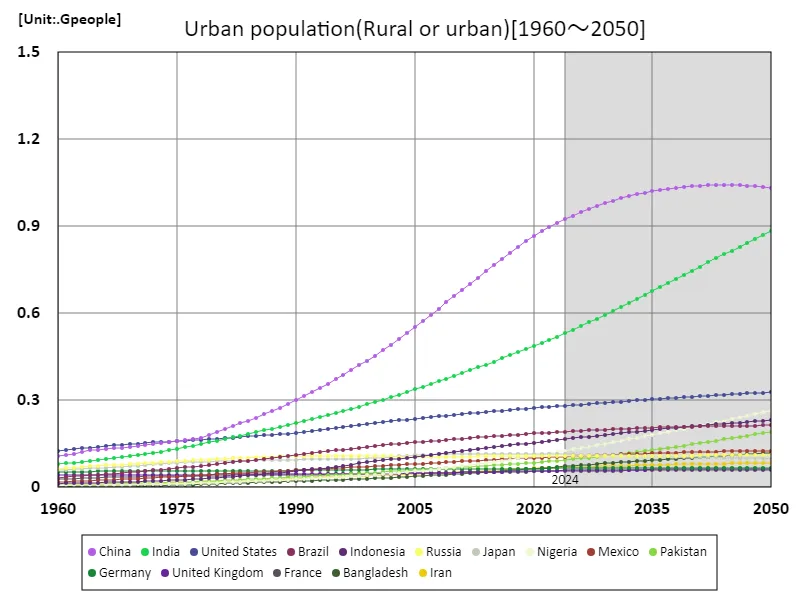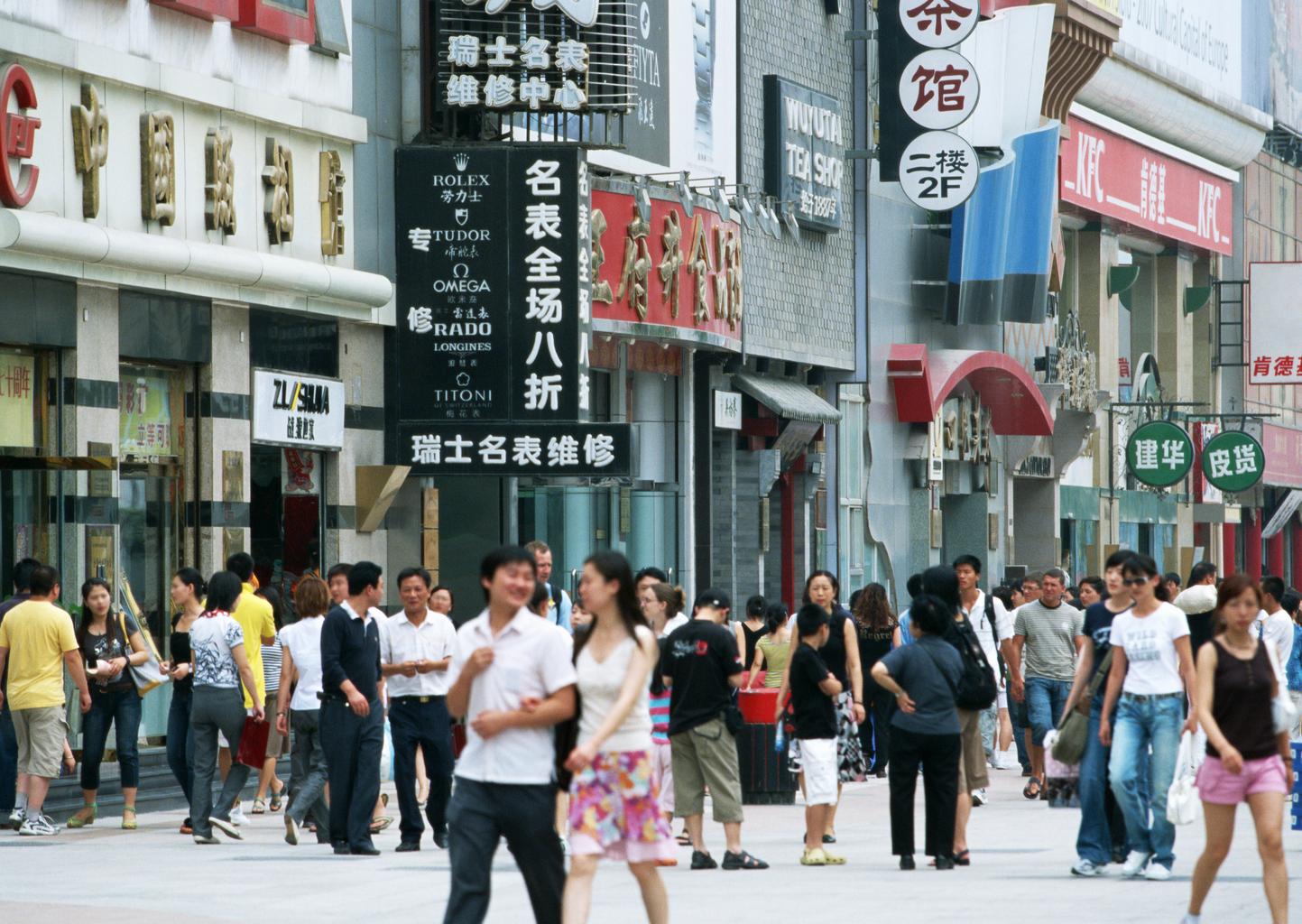Abstract
The urban population trends from 2023 to 2050 reflect rapid urbanization and population growth. Rural-to-urban migration continues, particularly in emerging economies in Asia and Africa, and urban populations are growing rapidly. This puts increasing strain on the city’s infrastructure, housing, transport and the environment. On the other hand, population growth in developed countries is slow, and urban population growth is also slow. While urbanization promotes economic growth, it also leads to urban sprawl, social disparities, and environmental problems. Sustainable urban development will be a major issue in the future, requiring efficient urban planning and the introduction of renewable energy.
Urban population
Since the 1960s, the world’s urban population has grown rapidly. The rapid urbanization that occurred from the 1970s to the 1990s in particular led to population migration from rural areas to cities in many countries. While economic opportunities have increased in urban areas and living standards have improved, rapid population growth has put strain on urban infrastructure and services. On the other hand, the population in rural areas is decreasing and depopulation is progressing. It is predicted that the world’s urban population will reach 6.57 billion by 2050, and the urban/rural population ratio will change significantly. Sustainable development will be required in urban areas, while regional development measures will be needed in rural areas. Overall, while increasing urbanization will impact the global economy and bring social and environmental challenges, different regional responses are important.


The maximum is the latest one, 6.57Gpeople of World
Urban population (worldwide)
Between 1960 and 2044, China’s urban population grew dramatically. Economic reform and rapid industrialization led to large-scale rural-to-urban migration, especially from the 1980s to the 2000s. China’s urban population was predicted to reach 1.04 billion in 2044, making it the world’s largest. However, it is currently at only 99.1% of its peak. This change indicates that economic growth is driven by increasing urbanization, but that we are facing limits to urbanization. The challenge for the future is to balance urban infrastructure, addressing environmental issues, and the declining population of rural areas. China’s growing urban population continues to have a profound impact on the global economy and social structure.


The maximum is 1.04Gpeople[2044] of China, and the current value is about 99.1%
Urban population (worldwide, latest year)
By 2050, China’s urban population is expected to reach 1.03 billion, making it the largest urban population in the world. Historically, China has seen rapid economic growth and urbanization. The reform and opening-up policies implemented in the 1970s accelerated migration from rural areas to cities, resulting in a rapid increase in urban population. Meanwhile, the world’s urban population will reach 6.34 billion, with an average of 32.7 million. This growth comes at a time of increasing urbanization in developing countries while remaining relatively stable in developed countries. Along with economic development, urban expansion brings with it complex challenges such as infrastructure development, environmental issues, and widening social disparities. In the future, sustainable urban development and efficient resource management will be required, and different responses for each region will be important.


The maximum is 1.03Gpeople of China, the average is 32.6Mpeople, and the total is 6.27Gpeople
Urban population (region, latest year)
By 2050, the urban population of East Asia and the Pacific is expected to reach 1.56 billion people, accounting for the majority of the world’s total urban population. The region is experiencing rapid urbanization and economic development, with a notable increase in urban population. Particularly in countries such as China, Japan and South Korea, advanced industrialisation and urbanisation are underway, leading to continued rural-urban migration. The world’s urban population is 8.31 billion, with significant differences in population distribution by region. The average urban population is 554 million, and while developing countries are urbanizing, developed countries are experiencing relatively slow urban population growth. While urbanization promotes economic growth, it also gives rise to challenges such as urban infrastructure, environmental issues, and social disparities. Sustainable urban development and balanced growth across regions will be key challenges going forward.


The maximum is 1.56Gpeople of East Asia & Pacific, the average is 554Mpeople, and the total is 8.31Gpeople



Comments